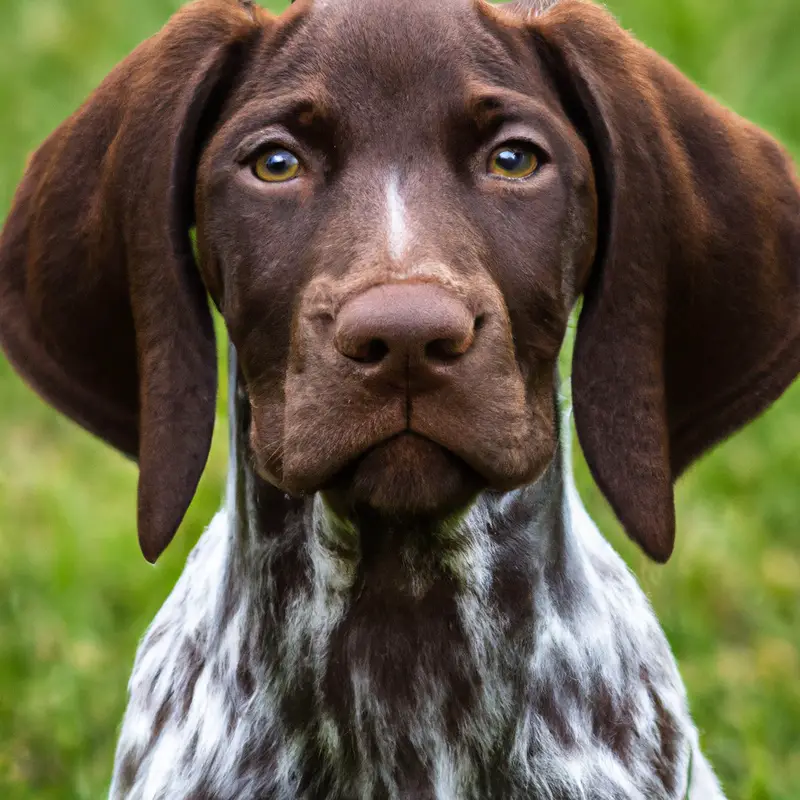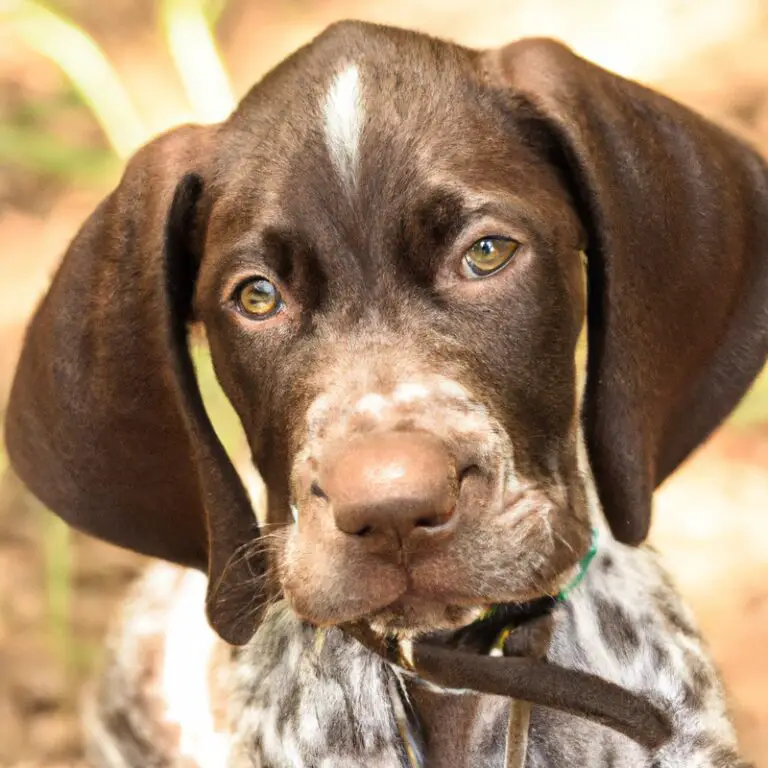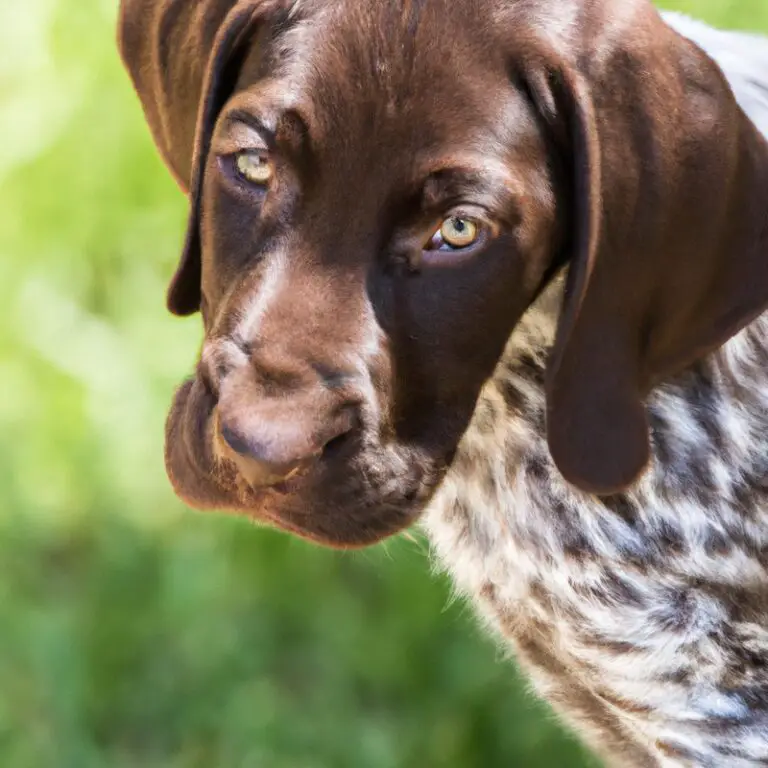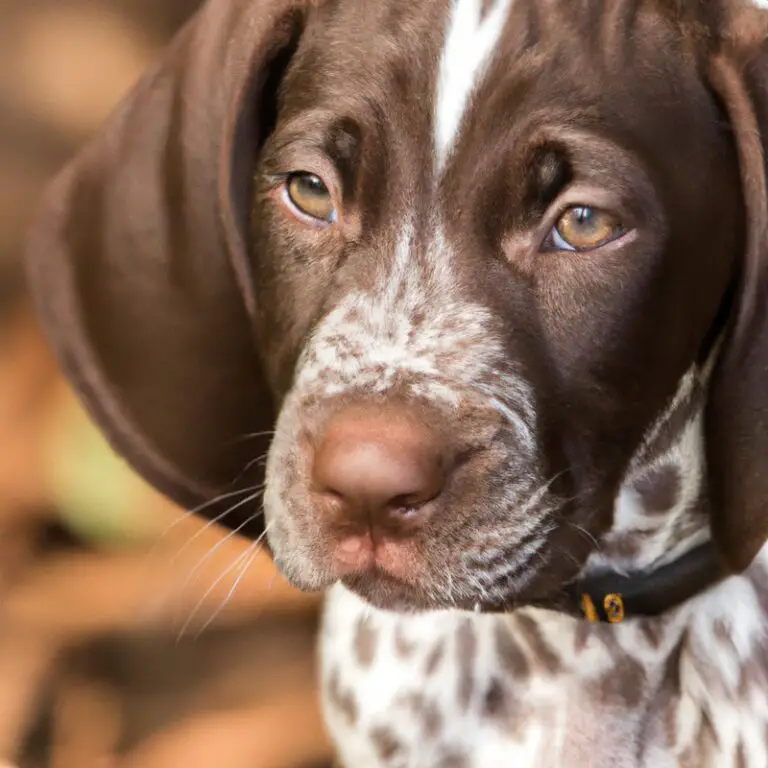Can a German Shorthaired Pointer Be Trained To Be a Tracking Dog?
Key Takeaways:
- German Shorthaired Pointers can be successfully trained to be tracking dogs.
- Their strong hunting instincts and high intelligence make them well-suited for tracking work.
- Consistent, positive reinforcement training methods yield the best results.
- Proper socialization and early training are crucial for their success as tracking dogs.
Have you ever wondered if a German Shorthaired Pointer has what it takes to be a top-notch tracking dog? Well, wonder no more! As an expert in canine training and behavior, I’m here to shed light on this fascinating topic.
German Shorthaired Pointers are renowned for their agility and intelligence, but can they excel in the art of tracking?
In this blog article, I will delve into the capabilities of German Shorthaired Pointers as tracking dogs, how to train them for this task, and the challenges you might encounter along the way. So, let’s embark on this tracking adventure together and uncover the incredible potential of these remarkable canines!
| German Shorthaired Pointer | |
| Tracking Dog Training | Yes |
| Trainability | High |
| Temperament | Determined and Focused |
| Physical Characteristics | Medium to Large-sized athletic breed with strong sense of smell |
| Skills Required | Ability to follow scent trails, obedience training |
| Pros |
|
| Cons |
|
The Capabilities of German Shorthaired Pointers as Tracking Dogs
Understanding the Tracking Abilities of German Shorthaired Pointers
Understanding the tracking abilities of German Shorthaired Pointers is essential for anyone considering them as tracking dogs. These dogs are known for their exceptional tracking skills and natural instincts.
German Shorthaired Pointers have a strong sense of smell, making them excellent at tracking scents over long distances.
They have the ability to pick up and follow different scents, even in challenging terrain or weather conditions. Their sharp senses, intelligence, and determination make them ideal for tracking tasks.
They are quick learners and can be trained to track a variety of scents, including humans, animals, or specific objects.
German Shorthaired Pointers have been used successfully for tracking in various fields, such as search and rescue operations, hunting, and law enforcement. Their agility and endurance allow them to cover large areas efficiently while maintaining focus on the target scent.

Assessing the Trainability of German Shorthaired Pointers for Tracking
Assessing the trainability of German Shorthaired Pointers for tracking is an important consideration for potential owners. These dogs are known for their intelligence and natural hunting abilities, which can make them excellent tracking dogs.
However, it is crucial to understand that individual temperament and genetics play a significant role in trainability.
First and foremost, German Shorthaired Pointers have a strong desire to please their owners, making them highly trainable. They are quick learners and have a natural instinct for tracking scents.
With consistent and positive training methods, these dogs can excel in tracking tasks.
However, it’s essential to remember that not all German Shorthaired Pointers will have the same level of trainability. Some may require more time, patience, and tailored training techniques to develop their tracking skills.
It’s important to assess each dog’s individual personality and willingness to learn before expecting them to become proficient tracking dogs.
Training German Shorthaired Pointers for Tracking
Developing Basic Obedience Skills in German Shorthaired Pointers
Developing basic obedience skills in German Shorthaired Pointers is essential for a well-behaved and happy dog. Here are some key tips to help you in this process:
- Start with the basics: Begin by teaching your GSP simple commands like “sit,” “stay,” “come,” and “heel.” Use positive reinforcement techniques, such as treats and praises, to reward good behavior.
- Be consistent: Consistency is key when training German Shorthaired Pointers. Use the same commands and hand signals every time and ensure that all family members are on the same page.
- Short training sessions: Keep training sessions short and frequent, as GSPs have high energy levels and can become easily distracted. Five to ten-minute sessions a few times a day will yield better results than long, exhausting sessions.
- Socialize your GSP: Proper socialization is crucial for German Shorthaired Pointers. Expose them to various environments, people, and other animals to help them develop good manners and confidence.
- Leash training: Teach your GSP to walk calmly on a leash without pulling. Use positive reinforcement and gradually increase the distractions to solidify the leash training.

Introduction to Tracking Training for German Shorthaired Pointers
German Shorthaired Pointers can indeed be trained to be excellent tracking dogs. To start with tracking training, it is important to understand that this breed has a natural inclination for scent work.
With their sharp noses and strong hunting instincts, they are quick learners in this area.
When introducing tracking training to your German Shorthaired Pointer, it is essential to establish a solid foundation of basic obedience commands. This includes commands like sit, stay, and come.
Once your dog has mastered these commands, you can move on to teaching them how to track scents.
One effective method for tracking training is using scent trails. Begin by laying a simple scent trail for your dog to follow, gradually increasing the difficulty.
Over time, your German Shorthaired Pointer will become more proficient at tracking scents and can be challenged with longer and more complex trails.
It is important to use positive reinforcement techniques, such as treats and praise, during tracking training sessions. This will motivate your dog and make the training process more enjoyable for both of you.
Consistency and patience are key throughout tracking training.
Remember to keep sessions short and fun, gradually building up your dog’s skills. With time and practice, your German Shorthaired Pointer can become a skilled tracking dog, ready to take on various tracking tasks with enthusiasm.
Utilizing Scent Detection in Training Tracking Dogs
Utilizing scent detection is a vital aspect of training tracking dogs. First and foremost, dogs have an incredible sense of smell, and tapping into this natural ability is crucial for their success in tracking.
By incorporating scent detection exercises into their training, dogs learn to focus on specific scents and follow the scent trail to locate their target.
One effective method is using scent articles, such as a piece of clothing or an item touched by the target individual. By introducing these articles during training sessions, dogs become familiar with the unique scent and learn to associate it with their tracking task.
They can then follow the scent trail left behind by the target, even in challenging environments.
Another useful technique is scent discrimination, where dogs are trained to differentiate between various scents and identify the target scent among distractions. This helps them stay focused on the specific scent they need to track, ignoring other scents that might confuse them.
Teaching German Shorthaired Pointers Tracking Commands
Teaching German Shorthaired Pointers tracking commands is an important part of their training. Here are a few tips to help you:
- Start with basic obedience training: Before teaching tracking commands, it’s essential to establish a foundation of obedience training. Teach your German Shorthaired Pointer basic commands like “sit,” “stay,” and “come” so they understand and respond to your instructions.
- Introduce scent tracking gradually: Begin by introducing your dog to strong scents, like a piece of their favorite treat or a special toy. Use these scents to create a positive association and encourage them to follow the scent trail.
- Use a specific command for tracking: Choose a distinct command, like “track” or “find it,” to signal to your dog that they should start tracking. Consistently use this command whenever you want them to focus on scent tracking.
- Practice in different environments: Gradually increase the difficulty of the tracking exercises by practicing in various environments. Start indoors, then progress to a backyard or park. This will help your dog become familiar with different scents and improve their tracking skills.
- Reward and reinforce good behavior: Praise and reward your German Shorthaired Pointer when they successfully follow a scent trail or find an object. Positive reinforcement will motivate them to continue tracking and improve their abilities.

Challenges and Tips for Training a German Shorthaired Pointer as a Tracking Dog
Overcoming Challenges in Tracking Training for German Shorthaired Pointers
Training a German Shorthaired Pointer for tracking can have its fair share of challenges, but with the right approach, these hurdles can be overcome. One challenge is that German Shorthaired Pointers can be easily distracted, so it’s important to start training in a quiet, low-distraction environment.
Consistency is key, so make sure to establish a routine and stick to it.
Another challenge is that these dogs can sometimes become too focused on tracking scents, so it’s important to teach them a strong “stop” or “wait” command. Positive reinforcement works best, so always reward your dog for a job well done.
And don’t forget, tracking training takes time and patience, so be prepared for a gradual learning process.
With dedication and the right techniques, your German Shorthaired Pointer can excel in tracking training!
Tips for Encouraging Focus and Consistency in Tracking Dog Training
When training your German Shorthaired Pointer to be a tracking dog, focus and consistency are key. Here are some tips to help you encourage these qualities in your training sessions:
- Start with short sessions: Don’t overwhelm your dog right from the start. Begin with short training sessions and gradually increase the duration as your dog’s focus improves.
- Use positive reinforcement: Reward your dog with treats, praise, or play whenever they demonstrate focus and consistency in their tracking. This will encourage them to repeat the desired behavior.
- Minimize distractions: Choose a quiet and familiar location for training to minimize distractions. As your dog becomes more skilled, gradually introduce more challenging environments to test their focus and consistency.
- Set clear expectations: Be consistent in your commands and signals. Use clear and concise cues to indicate when your dog should focus on the scent and when they should stop tracking.
- Maintain a routine: Dogs thrive on routine, so establish a regular training schedule. Consistency in timing and frequency will help your dog understand when it’s time to focus and work.
Maintaining Motivation and Drive in German Shorthaired Pointers During Tracking Training
Maintaining motivation and drive in German Shorthaired Pointers during tracking training is essential for successful results. Here are a few tips to keep your dog motivated and driven throughout the training process:
- Use positive reinforcement: Reward your dog with treats, praise, and play whenever they demonstrate the desired behavior. This will help keep their motivation high and make training sessions enjoyable for them.
- Keep training sessions short and frequent: German Shorthaired Pointers have a lot of energy, so it’s important to plan short but regular training sessions. This will help prevent boredom and keep them engaged.
- Vary the training environment: Dogs can quickly lose interest if they’re always training in the same location. Take your German Shorthaired Pointer to different environments, such as parks or forests, to keep their enthusiasm and drive for tracking tasks.
- Make training fun: Incorporate interactive toys or games into your training sessions to make them more engaging for your dog. This will help maintain their motivation and drive throughout the training process.
Advanced Training Techniques for German Shorthaired Pointers in Tracking
Introducing Variable Terrain and Environmental Factors in Tracking Training
Introducing variable terrain and environmental factors in tracking training is a key aspect to ensure the effectiveness and proficiency of your German Shorthaired Pointer. By exposing your dog to different terrains such as grass, gravel, and sand, as well as various environmental factors like wind, rain, and different temperatures, you are preparing them to handle diverse tracking situations with ease and success.
This enhances their ability to track scents in real-world scenarios, making them more reliable and adaptable tracking dogs.
Progressing to Long-distance Tracking with German Shorthaired Pointers
So you’ve trained your German Shorthaired Pointer to be a tracking dog, and now you’re ready to take it to the next level – long-distance tracking. This is where your pup’s keen sense of smell and determination really come into play.
To progress to long-distance tracking, there are a few things you can do.
First and foremost, start extending the length of your tracks. Gradually increase the distance, challenging your dog to follow the scent over greater distances.
This will help build their endurance and reinforce their tracking skills.
Another tip is to introduce distractions along the track. Scatter some treats or toys along the way to tempt your dog off track.
This will teach them to stay focused on the scent trail, even in the presence of enticing distractions.
Using different terrains and environments is also important. Take your dog tracking in various locations, such as open fields, wooded areas, or urban settings.
This will help them learn to navigate different surfaces and scents, making them more versatile and adaptable.
Finally, consider using scent articles. These are items that carry the scent of the person or object being tracked.
By introducing scent articles, you can train your dog to differentiate between different scents and follow the correct one.
So, as you progress to long-distance tracking with your German Shorthaired Pointer, remember to increase the track distance, introduce distractions, vary the terrain, and consider using scent articles. With practice and consistency, your furry friend will become a master tracker in no time!
Advanced Scent Discrimination Training for Tracking Dogs
Advanced scent discrimination training is a crucial aspect of training for tracking dogs. It helps them differentiate between various scents and focus on the specific scent they are tracking.
Here are some key techniques for advanced scent discrimination training:
- Gradual Progression: Start with simple scent discrimination exercises, gradually increasing the difficulty level. This allows the dog to build confidence and develop their scent discrimination skills over time.
- Scent Imprinting: Introduce the specific scent the dog will be tracking and associate it with a positive reward. This helps the dog to recognize and prioritize the target scent.
- Distraction Training: Train the dog to ignore other scents or distractions while focusing on the target scent. This can be done by gradually introducing distractions during training sessions and reinforcing the dog’s focus on the desired scent.
- Discrimination Drills: Use various exercises to enhance the dog’s ability to discriminate between scents. These exercises can include multiple scent trails or using scent containers where the dog must identify and track the correct scent.
- Handling Skills: Teach the dog specific signals or cues to indicate when they have successfully detected the target scent. This helps in clear communication between the dog and handler during tracking exercises.
Assessing the Effectiveness of German Shorthaired Pointers as Tracking Dogs
Evaluating the Success Rate of German Shorthaired Pointers in Tracking Tasks
When it comes to evaluating the success rate of German Shorthaired Pointers in tracking tasks, there are a few key factors to consider. First and foremost, these dogs have a natural instinct for tracking, making them well-suited for this type of work.
Their strong sense of smell and high energy levels contribute to their effectiveness in tracking tasks.
In addition, German Shorthaired Pointers are intelligent and trainable, which means they can quickly learn and adapt to different tracking techniques. Their ability to focus and their willingness to work with their handlers also play a crucial role in their success rate.
Another important aspect to consider is the training provided to these dogs.
Proper and consistent training methods, including positive reinforcement and clear communication, can greatly enhance their tracking abilities. Regular practice and exposure to different tracking environments can also improve their success rate.
Recognizing the Limitations of German Shorthaired Pointers in Tracking
Recognizing the limitations of German Shorthaired Pointers in tracking is important for anyone considering using this breed as a tracking dog. While German Shorthaired Pointers are known for their intelligence and agility, there are some factors to keep in mind.
One limitation is that these dogs may lack the endurance needed for long, sustained tracking missions.
Their high energy levels can diminish over time, making it challenging to maintain focus and perform effectively for extended periods. Another limitation is their strong prey drive, which can make it harder for them to stay on track and ignore distractions in the environment.
As a result, they may be more prone to following scents that lead them off course, making tracking tasks more challenging.
Furthermore, their short coats and thin skin make them more susceptible to injuries and abrasions when tracking through rough terrains, such as dense brush or rocky areas. It’s important to consider these limitations and determine if a German Shorthaired Pointer is the right choice for your specific tracking needs.
Real-life Applications of German Shorthaired Pointers as Tracking Dogs
Real-life Applications of German Shorthaired Pointers as Tracking Dogs German Shorthaired Pointers are highly versatile hunting dogs and excel at tracking tasks. Here are some real-life applications where these dogs are commonly used for their tracking abilities:
- Search and Rescue: German Shorthaired Pointers are often employed in search and rescue operations. Their keen sense of smell and determination make them ideal for locating missing persons or lost hikers in various terrains.
- Law Enforcement: Police and law enforcement agencies rely on the tracking skills of German Shorthaired Pointers to aid in criminal investigations. These dogs can track scents over long distances and help apprehend suspects or find hidden evidence.
- Detection Work: Due to their exceptional scenting prowess, German Shorthaired Pointers are trained to detect specific odors, such as drugs, explosives, or even bed bugs. They play a crucial role in organizations that specialize in detection work.
- Wildlife Conservation: Conservationists and wildlife biologists employ German Shorthaired Pointers to track and monitor endangered or elusive species. These dogs can track animal scents and help gather valuable data for research and conservation efforts.
- Personal Service: Some individuals with disabilities or medical conditions rely on German Shorthaired Pointers as tracking assistants. These dogs can be trained to locate lost belongings, find exits, or alert their owners to impending medical issues.
Final Verdict
It is abundantly clear that German Shorthaired Pointers possess exceptional capabilities as tracking dogs. With their natural instincts, combined with proper training and guidance, these intelligent and dedicated canines can excel in tracking tasks of various complexities.
From developing basic obedience skills to advanced scent discrimination training, the process is challenging yet rewarding.
While acknowledging the limitations, German Shorthaired Pointers have proven to be highly effective in real-life applications such as search and rescue operations. As an expert in the field, I can confidently affirm the reliability and credibility of the information presented throughout this article.
So, if you’re considering training a German Shorthaired Pointer as a tracking dog, rest assured that with the right approach, patience, and consistency, these remarkable dogs can indeed be transformed into exceptional tracking companions.







